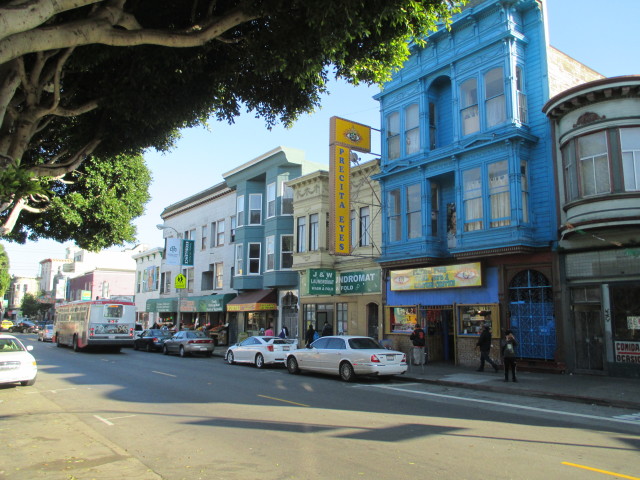There’s nothing crazy about the idea that too many high-end condos can ruin a working-class neighborhood.

By Tim Redmond
FEBRUARY 19, 2015 – The developers and advocates for market-rate housing seem to think that the idea of slowing down development in the Mission is something horrible and radical that will bring on the End of Times.
But what Sup. David Campos is talking about is pretty common-sense stuff. And it’s based on the recommendations of a group that the Board of Supervisors and the mayor set up to make recommendations for a Latino Cultural District.
“It’s really amazing,” Campos said, “to see how even before we have announced a formal measure all these people who want more luxury housing are coming out against it.”
Understand the history here:
In 2014, with the support of Mayor Ed Lee, Campos got the board to create the Latino Cultural District. The resolution talked about the rich history of the area – but also the forces of displacement.
And the city created the Calle24 community-based organization to adopt recommendations for preserving the culture, history, and character of a neighborhood under siege.
Help us save local journalism!
Every tax-deductible donation helps us grow to cover the issues that mean the most to our community. Become a 48 Hills Hero and support the only daily progressive news source in the Bay Area.
The Calle24 people – merchants, property owners, and residents – have been meeting for more than a year to discuss how to preserve the culture and existing small businesses in the area. They’ve come up with recommendations that make perfect sense – if your goal is to prevent the gentrification and displacement that have happened in so many other parts of the Mission.
Let’s start with some facts. The Valencia Corridor is pretty much done: It’s been almost entirely taken over by high-end stores and restaurants, and there’s not that much space left for community-serving businesses – or even new fancy food places.
That’s an example of what happens when the city allows market forces to determine a community’s destiny.
Now investors who want to set up the next generation of places serving $15 cocktails and $50 plates that cater to the tech crowd are trying to find room on the Eastern stretch of 24th Street. They’re already bidding up rental prices — to a crazy level. I’ve heard about an offer of $100,000 just for the right to pay $5,000 a month in rent for a 24th Street storefront.
Meanwhile, developers want to build more luxury condos in the area – of course. That’s where the international capital that drives development in this city is looking for the best possible returns.
Problem is, luxury condos (a) don’t serve the existing community and (b) drive up both residential and commercial land values. This isn’t a surprise; it’s happened all over the city. If you build several thousand more units of million-dollar condos near the Latino Cultural District, you will damage the district. Existing residents and businesses will be forced out to make way for a new Valencia Street.
Let me make something very clear: When you put new market-rate housing in a vulnerable, low-income community you threaten the fabric of that community. Luxury housing isn’t compatible with community-based small businesses, nonprofits and low-cost restaurants that cater to a working-class clientele. It just isn’t.
If we have to build a lot more market-rate housing in this town (and I would argue against that presumption, but let’s say we do) then I think the Mission has already taken more than its fair share. Just as too many liquor stores are a problem in parts of the Tenderloin, too many luxury condos are a problem in the Mission.
So that type of housing at this point needs to go somewhere else for a while. (It really ought to be in Mountainview and Palo Alto.)
Despite the Chron’s headline, the group doesn’t want “a temporary halt to new housing.” In fact, prioritizing the construction of affordable housing is a central part of the agenda.
What the Calle24 folks don’t want is to face the fate of Valencia Street. They want the people who live and work there now to have the right to stay put. The poet Gary Snyder once said that the most radical thing you can do is live in the same place your entire life. There are fifth-generation Mission residents who want to be able to stay, and want their kids to stay. That counts for more than someone with a high-paying job who thinks the Mission is cool.
I’m sorry, it just does.
As I’ve said over and over again, that concept has to be at the basis of any serious planning for the city’s future. You can’t allow new money – tech money, or finance-industry money, or biomedical money, or whatever – to destroy existing vulnerable communities. If you are already here, you get to stay.
It’s not easy to protect a place like 24th Street. You need to be creative. And one of the ways you do that is by putting a temporary moratorium on the things that are an immediate threat.
This is pretty standard in city planning. We’ve had a moratorium on banks on Haight Street in the 1980s, a moratorium on nail parlors on upper Fillmore in the 1990s, and Sup. Scott Wiener and Campos worked together on tighter rules for the conversion of retail to restaurants on Valencia. The city sees that one business sector is (like an invasive species) taking over a commercial corridor, and we set limits.
The Calle24 people want to restrict new restaurants on 24th. That ought to be easy to do. And it will help keep the most invasive commercial species – high-end destination food places – from driving out the community-serving businesses. (And you think the traffic is bad on Friday night on Valencia? Imagine 24th and Harrison with that type of crowd.)
But the big lift, of course, is housing.
District supervisors tend to defer to their colleagues when it comes to local zoning issues. But Wiener has already come out against any type of housing moratorium. He told me he won’t support it, and he referred me to his Facebook post:
We are all deeply frustrated by the cost of housing in San Francisco, but overreacting by placing a moratorium on market-produced housing in the Mission (or anywhere else) isn’t the answer. In fact, it’s counter-productive. We don’t have enough housing in San Francisco, and we need to produce more, not less. Let’s focus on real solutions to our housing crisis — producing all sorts of new housing for all of our residents — rather than cutting off our nose to spite our face by shutting down housing production.
But that misses the point. All housing is not created equal. Gentrification and displacement are very real, and building new market-rate housing doesn’t help the situation – it makes things worse.
So a moratorium on market-rate housing near the Latino Cultural District isn’t crazy or even that unusual as a planning tool.
“The status quo is not working,” Campos told me. “The free market hasn’t addressed these issues. There are people who say any kind of moratorium is a problem – but the people who live and work here say this is what we need.”






